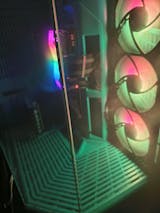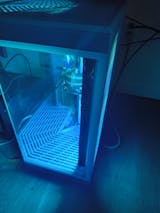DDR4 RAM Is Now the Industry Standard
For a long time, memory modules that support DDR4, an abbreviation for "Double Data Rate 4," have been considered the gold standard. It has a tried-and-true performance record, making it a go-to option for many different kinds of computer tasks. DDR4 memory has the following salient features:
DDR4 memory generally runs at transfer speeds between 2133 and 3200 MT/s (millions of data transactions per second). However, overclocking allows for marginal increases in performance.
By operating at a lower voltage of 1.2 volts, DDR4 memory modules consume less power and generate less heat than their DDR3 predecessors.
The higher memory capacities per stick made possible by DDR4 modules are an asset in server and high-performance computer environments.
DDR5 RAM: The Future of Data Storage
DDR5, the successor to DDR4, features a number of enhancements designed to boost both performance and economy. Let's have a look at what sets DDR5 memory apart:
DDR5 memory offers far faster data transfer rates than its predecessor, DDR4. Starting at 4800 MT/s, it may be overclocked to achieve speeds of 8400 MT/s and beyond. Overall system performance is enhanced by this higher velocity.
DDR5 memory runs at 1.1 volts, which is lower than that of DDR4, further improving power efficiency.
DDR5 memory's On-Die Error-Correcting Code Efficient memory error detection and correction made possible by on-die ECC (Error-Correcting Code) capabilities. In server settings, where data security is critical, this is of fundamental importance.
DDR5 memory provides a bigger memory bus, which leads to higher memory bandwidth. Since information may now move more swiftly between the CPU and memory, the system's responsiveness has been enhanced.
DDR5's improved refresh method helps save power while the device is idle, and it also features various other power-saving innovations.
Memory-intensive processes like video editing, 3D rendering, and virtualization benefit from DDR5's increased module density because of its larger module capacities compared to DDR4.
Consumer Implications
Whether you choose with DDR4 or DDR5 memory relies heavily on your needs and the motherboard you're working with. Here are some things for customers to think about:
DDR5's increased data transfer speeds and better bandwidth are great news for gamers and multimedia makers that need the very best performance. But to properly take use of these features, they'll need a motherboard that's compatible with it.
Consumers on a restricted budget may still benefit from DDR4 memory, as it provides good performance at a lower cost than DDR5.
DDR5 is highly recommended for server and workstation applications where data dependability and capacity are paramount due to its ECC support and higher memory density.
Investing in DDR5-compatible components if you're creating a new system and want it to remain relevant for years to come may be a good idea, since DDR5 is expected to become the new standard in the near future.
Memory modules have evolved considerably over the years, with DDR4 and DDR5 representing two unique generations. While DDR4's performance is tried and true, DDR5 ushers in the next generation of lightning-fast computers. Ultimately, it will come down to your individual preferences, available resources, and hardware compatibility to determine which option is best for you. Memory modules are expected to develop further as technology progresses, offering new and exciting capabilities to the computer world.














